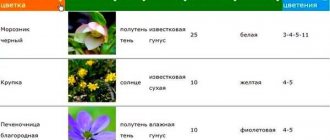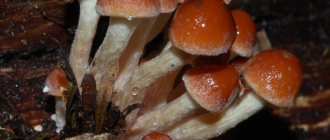How to grow buckwheat in the field and at home?
Buckwheat, despite being quite capricious, is very popular among farmers and agronomists due to its high yield and the fact that the demand for buckwheat, in particular in Russia, is quite large.
Growing buckwheat is not the easiest task in agriculture. This process requires considerable knowledge and attention. This crop not only reacts strongly to climate and weeds, but is also most susceptible to attacks by various pests. Let's figure out together how to grow buckwheat.
Buckwheat growing areas in Russia
The most popular type of cereal, quick-cooking kernels, is made in buckwheat-growing areas. The seeds are steamed and separated from the shell, after which they darken. In this form, farmers send grain to processors throughout the country.
There are large buckwheat fields in Bashkiria, Tatarstan, Altai, Stavropol, Primorsky and Krasnodar territories.
Cereals are grown in the vicinity of Orenburg, Orel, Lipetsk, Tula, Kursk, Volgograd, Saratov and Chelyabinsk.
Buckwheat during flowering
Cultivated buckwheat is a well-branched and tall plant, with a developed and powerful root system. The average height of the stem varies depending on the type and variety, but usually ranges from 70 to 110 cm. The root of the plant has increased physiological activity, which explains the ability of buckwheat to displace weeds from fields. The three-tiered root system can lie to a depth of 1 m or more, providing the crop with all the necessary nutrients even in poor soil.
The stem of buckwheat is hollow and slightly ribbed, branched, with a thickness of 2.5 to 8.5 mm. The branching zone is located just above the lower cotyledon node. The leaves are pointed, triangular or oval in shape. From the axils of fourth-order leaves and branches, thin and hairless peduncles are formed, on which an inflorescence of 2-5 flowers is eventually formed. With good care, up to 3,000 milky-white, pinkish, red or white-pink flowers open on one plant during the flowering period.
Varietal buckwheat blooms from the moment the formation of the root system ends, and this period is the most energy-consuming in the life of the plant. The weight of the above-ground part of buckwheat increases by 2-4 times during flowering. Despite the fact that selected varieties of buckwheat are cross-pollinated, bees are needed for a good harvest. Flowers have nectaries that are open and easily accessible to insects, which facilitates pollination work.
How is the harvest going?
Like the flowering period, the ripening period of buckwheat is extended. Buckwheat, grown in Russia, is usually harvested from the fields using a separate method. Due to the extended ripening period, it is difficult to determine the start date of field harvesting. During early harvesting, the yield is reduced due to the large number of unfilled grains, and late harvesting suffers losses due to excessive grain shedding. Also, determining the start date for harvesting is complicated by the tendency of buckwheat to produce secondary fruit. It occurs if at the beginning of fruit formation there was a drought, which was then replaced by heavy rains.
Read also: What garden flowers can be grown in pots outside
Typically, farmers begin by harvesting those fields of varietal buckwheat where about 75% of the grain is ripe. Mowing and forming windrows takes up to 5 days, and by the time the work is completed, the grain has matured in 95-98% of the field. To determine the percentage, a seed sample is taken from 10 plants in 5-7 different sowing areas, and the number of mature seeds from the total number is calculated. If the weather is dry and hot during harvesting, then it is advisable to mow in the morning and evening: at this time the stalks do not break and the grain is less likely to crumble.
Mowing is carried out using combine harvesters with mounted headers (ZhVN-6A, etc.), and for mowing clogged or laid buckwheat, headers of the ZhKS-4A class are used. The windrows are usually threshed 3-6 days after mowing at a grain moisture content of 14 to 17%. After threshing, the grain heap must be passed through cleaning machines to sift out chaff seeds and weeds, and then dried to standard moisture or sowing condition if the grain will be used in the next agricultural year.
How buckwheat grows and what it looks like during flowering
When buckwheat (Fagopyrum esculentum) begins to bloom, it looks very beautiful.
The flowers can be white or pink and bloom in July.
Then small triangular seeds are formed, which ripen unevenly, some may fall off.
Buckwheat is an excellent honey plant. In summer, bees come to the flowering buckwheat fields to collect nectar and make very fragrant, dark brown honey. For baking, such honey is a real find; it makes golden cakes for honey cakes and gingerbreads perfectly.
There is a variety of buckwheat with green flowers called “Zelenotsvetkovaya” or “Malikovskaya”, bred in the 80s of the last century. It is characterized by high yield and resistance to grain shedding from the stem.
Where is buckwheat grown?
In global grain production, buckwheat does not play as important a role as wheat or oats, but many countries grow varietal buckwheat for feed and food purposes. In some regions (Altai in Russia, central regions in China, etc.) field buckwheat actively grows as a weed: it differs from varietal buckwheat in lower yield and unsuitability for making flour.
Rating of Russian regions by sown area
In 2016-2017, the Altai Territory became the leader in the increase in crop cultivation areas. Cultivated areas increased by almost 95 thousand hectares. In the Penza region, the increase in fields exceeded 17 thousand hectares, and in Bashkiria - 12 thousand hectares. A significant increase in cultivated fields was observed in 2021 in the Saratov and Novgorod regions, Tatarstan, Voronezh and Kemerovo regions, and in the Republic of Khakassia.
The areas of cultural cultivation of buckwheat by sown area in Russia look like this:
- Altai Territory - 561 thousand hectares with an average yield per hectare of 11.5 centners;
- Bashkortostan - 99.5 thousand hectares with a yield of 10 c/ha;
- Orenburg region - 86 thousand hectares with a yield of 10.6 c/ha;
- Oryol region - 75 thousand hectares and 11.3 c/ha;
- Kursk region - 32 thousand hectares and 12.4 c/ha;
- Voronezh region - 31.5 thousand hectares and 11.4 c/ha.
The record-breaking regions for the number of sown fields also include Chelyabinsk and Tula regions, Tatarstan, Penza region and Krasnodar region.
Factors influencing the growth of cropland
The main factor that affected the increase in crop cultivation area was an increase in demand for cereals and a high price level. Gross harvests grew more than the sown area and reached record levels: 1,187 thousand tons against 860 thousand tons in 2014-2015. Along with record production rates, export and import shipments have decreased in recent years, which has helped support the domestic market and manufacturers. High prices for cereals made it possible to grow buckwheat with minimal risks for the farm, which increased farmers' interest in the crop.
An additional factor that made it possible to increase the sown fields is climatic and soil conditions. Regions where edible buckwheat is grown in Russia have seen improved soil conditions due to fertilization and are also experiencing milder winters.
Other countries where the crop is grown
In 2021, the leader in buckwheat production was Russia. In second place in the production and consumption of buckwheat porridge in the world is China with a yield of 405 thousand tons. In the top ten countries:
- Ukraine - 180 thousand tons;
- France - 122 thousand tons;
- Poland - 120 thousand tons;
- Kazakhstan - 90 thousand tons;
- USA - 75 thousand tons;
- Brazil - 63 thousand tons;
- Lithuania - 50 thousand tons;
- Japan - 30 thousand tons.
Good harvests are also obtained in Tanzania, Latvia, Australia and Belarus. The main importing countries of cereals are Japan, France, Italy and Spain, and the leading exporting countries with a market share of up to 70% are the USA, Poland, Russia and China.
Prices from suppliers
Despite the statements of farmers that there will be enough buckwheat for everyone, in a number of regions of the Russian Federation suppliers have already begun to increase the price tag for this cereal. In the Novgorod region, it has risen in price by 6% since the beginning of the year. Buckwheat began to increase in price in stores in the Ulyanovsk region. As Mikhail Semenkin, Minister of Agriculture and Rural Development of the region, told TASS, there is now an increase in prices for buckwheat, and there is no talk of their reduction in the near future due to a number of factors.
“The rise in buckwheat prices is affected not only by the constant increase in production costs (fertilizers, pesticides, fuels and lubricants, delivery costs), but also by the fact that after the record buckwheat harvest in 2021, prices for cereals have dropped sharply. In this regard, in the main buckwheat-growing regions of the Russian Federation, there has been a reduction in buckwheat crops,” the minister said, noting that in September the price of cereals increased by about 4.5%. Now a pack of buckwheat of 800-900 grams in Ulyanovsk stores costs about 20-30 rubles.
More significant growth was observed in the Oryol region, where the wholesale price almost doubled. “The price has already increased: the wholesale price today is from 40-45 rubles, <...> and it was 25 rubles. There will be growth, and where it will stop, I don’t know. And in retail there are chain stores that set the markup they want, and manufacturers cannot influence it in any way,” Oryol director Andrei Golenkov told TASS, adding that there is now a gross shortage of cereals in the region.
Buckwheat is also becoming more expensive on store shelves in Bashkiria. True, for now this applies specifically to new supplies of cereals, chairman of the Bashkir trade association Farit Gindullin told TASS. “The price of buckwheat is overpriced, a slight increase began at the end of September, last week the price increase was already 10-15%. At the same time, there is no rush; now the average price is 40-41 rubles per kg. And the maximum is 61 rubles, which is just a new batch. It is not yet clear to us what this is connected with, we will talk with suppliers,” he said.
The Ministry of Agriculture of the TASS region explained that the republic’s farmers have reduced the area of buckwheat due to overproduction in 2021. “The buckwheat harvest is 65 thousand tons, which is more than enough for the needs of the region. Last year, the area was higher, but due to overproduction of buckwheat throughout the country, prices collapsed. In Russia, almost everyone, including Bashkir farmers, reduced their area, since there was even a carryover supply of buckwheat grain left,” the ministry said.
In the Voronezh region, where farmers have halved the area under buckwheat crops, prices are also going up, showing a three percent increase over the week. The most expensive package of cereal in the capital of the Black Earth Region costs 76 rubles, the cheapest is three times lower. But there is no rush in the stores; no one is buying cheap buckwheat. As the Department of Agrarian Policy of the Voronezh Region responded to a TASS request, an increase in wholesale prices for buckwheat is not expected and is not planned. Olga Shendrik, press secretary of the Federal Antimonopoly Service for the Voronezh Region, told TASS that there have been no complaints about rising prices for buckwheat, and checks on this issue have not yet been carried out.
Interesting facts about buckwheat
Buckwheat is native to the Himalayas and was domesticated in Nepal and the regions of Northern India more than 4,000 years ago. The grain was used not only for making porridge, but also for flour, and also as a valuable fodder crop. Buckwheat came to Russian territory during the time of the Golden Horde and quickly spread, becoming a favorite dish. In addition to Russia, buckwheat and flour are popular in England, China, Japan, India, and Australia. In many European countries, only green, unroasted buckwheat is sold because it is healthier.
The fruit of the plant, although called a “grain,” is in fact not a grain, but belongs to the seeds of the rhubarb family. Of all the cereals, buckwheat is one of the healthiest: it contains a lot of iron, amino acids, vitamins, and mineral compounds.
Useful and medicinal properties of buckwheat:
- Lack of gluten, which eliminates the development of allergic reactions;
- Regular consumption of porridge helps to increase the production of dopamine, a neurohormone that affects motivation, mood, and activity;
- Strengthening the blood vessels of the circulatory system;
- Improving hematopoietic processes;
- Improved digestion.
They recommend porridge and buckwheat products for diseases of the cardiovascular system, gastrointestinal tract, respiratory system, and disorders of the musculoskeletal system. Compresses made from seeds treat skin diseases, and sifted buckwheat flour is an excellent powder for children.
The share of buckwheat in the world grain production market is small, but this does not negate the nutritional value of the crop. Buckwheat is one of the healthiest and cleanest: no chemicals or artificial fertilizers are used during cultivation. The chemical composition of the seeds allows them to be used in dietary, diabetic, children's and special nutrition, during recovery from many diseases, as a prevention of diseases of the cardiovascular system and depression. In Russia, buckwheat is grown in more than 30 regions and republics, and the Krasnodar Territory shows the largest harvest. In the world, Russia ranks first in grain turnover, and the top five cereal producing countries are China, Ukraine, Poland and France.
Cultivation of buckwheat: types and applications
Buckwheat is one of the main cereal crops, which firmly holds its position in the consumer market. It would be a stretch to call it a strategic product, but there is always demand for it. At the same time, many farmers prefer not to mess with buckwheat, since it has a reputation as a rather troublesome and low-yielding crop that does not always pay off its investment. However, if all cultivation rules are followed, buckwheat can produce very high yields.
Buckwheat - description of culture
Common (sowing) buckwheat is a species of herbaceous plants belonging to the botanical genus of the same name in the Buckwheat family. Buckwheat grain is a popular cereal, widely used as food in the post-Soviet space and in some other countries.
Buckwheat has a straight, ribbed, reddish-colored stem with a cranked structure. The height of an adult plant reaches an average of 50-120 cm, but individual plants can stretch to a height of more than 2 meters.
The shape of the leaves varies within the same plant. Petiolate, heart-shaped, pointed leaves are located closer to the ground, and arrow-shaped leaves are located closer to the top and edges of the branches.
The root has a tap structure and penetrates the ground to a depth of about a meter, but most root branches are located within 40 cm of the ground surface.
Read also: How to grow Texas white quails correctly
Buckwheat flowers are collected in inflorescences and consist of five petals with large columns of pistils. Color - white or pale pink, cream. Buckwheat seeds, which are commonly called grains, usually have the shape of a dihedral pyramid.
Buckwheat produces male and female flowers. One plant can only have one type of flower. Pollination between plants is carried out primarily by insects, but pollination by wind also occurs.
Although about half a thousand flowers are formed on one plant, only about 5% of them yield grain, while the rest simply fall off. It is believed that this particular feature of buckwheat is the main reason for the low yield of this crop.
Modern cultivated buckwheat is believed to have been bred about 5-8 thousand years ago in Northern India, Tibet or southwestern China, where its wild relatives still grow in natural conditions. Over the next one and a half millennia, buckwheat spread throughout China, and from there it came to Korea and the Japanese islands. A little later, this culture was brought to Central Asia, the Middle East region and the Caucasus.
It is believed that in Europe the cultivation of buckwheat began after the Tatar-Mongol invasion, although the Slavs learned about it much earlier - from the Byzantines (which is why we call it buckwheat - that is, “Greek cereal”).
However, there are alternative versions that do not fit at all with the one described above. Archaeological finds show that in the territory of modern Finland, buckwheat was grown already in 4-5 thousand BC, which makes it very difficult to substantiate the Himalayan region as the birthplace of cultivated buckwheat.
Where did buckwheat originate?
Buckwheat, like any culture, has its own ancestral homeland and buckwheat is no exception. Of course, she appeared on earth so long ago that no one knows the exact date. The most likely option for her homeland is Asia; to be more precise, it is believed that she came to us from the distant Himalayas. This conclusion was not made in vain; the largest number of varieties of this crop grow in the wild in this territory.
According to excavations and writings, it was determined that in India and Nepal it already existed before our era and that was more than 5000 years ago. It was called there “black porridge” or later received another name in those territories “black rice”.
Buckwheat traveled around the world for a very long time; already in the 15th century BC, buckwheat had already reached China, Korea and Japan, most likely the name “black rice” came from there. Then she moved to Central Asia, but from there she has already gotten closer to us. From Asia it came to Europe, where it was nicknamed “pagan grain”; in France it then took root very poorly and did not gain popularity; nowadays, by the way, it has not become a favorite porridge there and is used more for medicinal purposes than as a side dish.
the name “beech wheat” was also very common ; buckwheat received this name due to the similarity of its grains with beech nuts, of which there were a lot throughout Europe.
Use of buckwheat in cooking
First of all, buckwheat is a cereal grain crop. The fruits or grains of buckwheat are used for human food and as feed for agricultural and domestic animals.
In Russia, buckwheat goes on sale mainly in the form of whole grains that have undergone heat treatment. This grain is great for making porridge, various casseroles, cutlets, and also for soups. Flour made from ground buckwheat is a rarer and less popular product, since it is more expensive than wheat and is inferior to it in most respects. In particular, due to the absence of gluten in buckwheat flour, it is impossible to make pastries and bread from it. Finally, uncooked (green) cereals are considered healthier than regular fried cereals, but are used in the same dishes.
In the post-Soviet space, including Russia, buckwheat is a fairly popular product. Consumers prefer almost exclusively fried buckwheat, from which they prepare porridges, soups and other dishes. Green buckwheat is almost not in demand here. In Western countries, the average consumer does not know the fried buckwheat that is familiar to us, and only those who are very concerned about their health and figure occasionally buy green buckwheat as a dietary product.
In the East, particularly in Japan, their wheat and buckwheat flour is used to make traditional noodles (soba) and other pasta products. A similar tradition exists in Alpine Italian cuisine. The French make famous Breton pancakes from buckwheat flour. Finally, in the national cuisine of Jews living in Eastern European countries, there is “varnishkes” porridge, which is prepared from buckwheat cooked with noodles.
How to make buckwheat cereal
Buckwheat seeds, peeled from their shells, are light green in color. They turn brown after heat treatment - frying, steaming. There are several varieties of cereals depending on the manufacturing method:
- green, not subjected to any processing;
Green buckwheat - ripened buckwheat seeds that have not undergone heat treatment
The shade of the fried grain depends on the processing - the more the grain is rolled, the lighter it is
Buckwheat can be made from both green and fried buckwheat
In terms of the content of vitamins and microelements, green buckwheat, which is classified as a dietary product, is the leader. The fewer processing steps, the more nutrients are retained in the product. And from rare Smolensk cereals in Rus' they prepared traditional “downy” porridge.
Flour is also made from buckwheat grains, and in the East tea is also made.
Video: buckwheat is the way to our table
Buckwheat is grown not only for eating seeds, but also as a honey plant or green manure. Buckwheat fruits are useful in any form, but green cereals have the highest nutritional value.
The plant received the name “buckwheat” because it was brought to Rus' from Greece. And its grain was called “Greek cereal.” The valuable grain and honey crop has gained popularity due to its tasty and nutritious cereals.
The plant does not require special growing conditions. On poor soils, adequate nutrition is provided by the powerful root. Below you will find a description of the plant and learn why buckwheat flowers and leaves are valued, what it looks like in the photo and where it grows, when it blooms and at what time it is harvested, as well as its benefits and uses.
Other uses of buckwheat
Buckwheat is the most important honey plant in regions with light sandy loam soils. In such an area, the success of beekeeping and the volume of honey production directly depend on the presence/absence of buckwheat fields nearby. In a favorable year, one hectare of buckwheat can produce from 50 to 80 kg of high-quality honey.
Today in New Zealand, buckwheat is used as a biological pest control agent. The plantings of this crop, rich in pollen and nectar, attract predatory insects, which, using safe biological methods, sharply reduce the number of insect pests that destroy crops of other crops.
Finally, buckwheat is widely used in folk and modern scientific medicine. For example, processing buckwheat in a certain way allows you to obtain the raw materials necessary for the production of rutin. This substance is used in the treatment of certain vascular diseases, diathesis, hypertension, measles, scarlet fever, atherosclerosis and even radiation sickness. Buckwheat is also used in one form or another in the treatment of many other diseases, including varicose veins, hemorrhoids, rheumatism, arthritis and sclerosis.
Buckwheat has long been used in folk medicine. So, a decoction of buckwheat flowers and leaves was used to fight colds, as well as dry coughs. Buckwheat porridge was fed to the sick and wounded who had lost a lot of blood. Skin diseases were treated with ointment and poultices made from buckwheat flour, and wounds and abscesses were treated with fresh leaves.
Buckwheat varieties
Currently, more than 60 varieties of buckwheat are zoned in Russia, most of which are local, that is, purely regional. The most widespread are:
- Bogatyr. Suitable for cultivation in almost the entire European part of the country with the exception of the north and southwest, as well as in some regions of Siberia. The variety is considered high-yielding, with high quality grain.
- Bolshevik. Designed for the southern regions of the central black earth zone and the North Caucasus.
- Kazansky. The variety is zoned for Tatarstan and adjacent regions. The variety is characterized by early ripening.
- Slav. Designed for southern regions.
- Tepexovsky. It was bred in Belarus, but due to climatic conditions it is also suitable for the Amur and Nizhny Novgorod regions of Russia. The variety is high-yielding, but the grain quality is average.
It should be noted that there is also Tartary buckwheat. But this is not a variety, but a separate independent species of plants of the same botanical genus. Tartary buckwheat is considered a weed, but if desired, it can be grown as a feed crop for animals.
General information about growing buckwheat
Buckwheat is a fairly heat-loving crop. Seeds germinate at temperatures not lower than 6 °C, and truly large-scale crops germinate when the earth warms up to 15-20 °C. At optimal temperature and soil moisture, no more than a week passes between sowing and the emergence of seedlings - on average 5-6 days.
If after the emergence of seedlings there is a frost and the temperature drops a couple of degrees below zero, the young shoots may suffer greatly, even to the point of complete loss of the harvest. Oddly enough, high temperatures for buckwheat are contraindicated to the same extent. If the heat exceeds 30 °C, the rate of pollination sharply decreases, the ovaries form much less well, and, as a result, the yield decreases sharply.
Buckwheat is capricious not only in terms of temperature, but also in terms of humidity. It has a fairly high transpiration coefficient: it consumes 500-600 g of water to form 1 g of dry mass of the plant. It is for these reasons that it is believed that growing buckwheat is a troublesome task.
But the requirements for the soil composition of this crop are quite liberal. Buckwheat grows well on podzolic and gray podzolized soil, and on all types of chernozem. The plant produces poor yields only on very acidic podzolic (pH 4.5 and below) and heavy saline soil.
How to grow buckwheat and the main characteristics of the plant
Lat. Fagopyrum esculentum
The natural habitat of the plant is East and Southeast Asia. Buckwheat is not picky about the soil and is capable of producing a good harvest even in the poorest and heaviest soils; this biological feature allows it to be grown in central Russia and in certain climatic conditions in the Far East and Western Siberia.
Buckwheat has two types:
Ordinary (edible, sowing) is the main type of plant; the porridge familiar to everyone is made from its fruits.
This is an annual plant that reaches up to 1 meter in height. It has a bare stem, large leaves and a taproot system. Small flowers are formed in a brush, in normal temperature conditions they are white in color, but during cold weather they acquire a pink tint. Despite the fact that buckwheat is a grain crop, the fruits of the plant are triangular nuts, reaching a length of up to 6.5 mm. Buckwheat reproduces by seeds.
Tatarian (kyrlyk) - unlike ordinary buckwheat, it is less demanding on soil cultivation and more resistant to low temperatures. It is characterized by thick-skinned small fruits and is therefore used as livestock feed or green manure in household plots.
The main conditions for growing plants are temperature. Its optimum is quite narrow - at temperatures below + 13° C, plant development slows down, when it rises above + 25° C, pollination stops.
Buckwheat is known as a capricious crop, the yield of which is not stable. And only a constructive approach to the plant and knowledge of agricultural techniques help achieve high yields.
Preparing the soil for buckwheat
The method of cultivating the soil for buckwheat greatly depends on the predecessor crop. If there were winter grains or legumes on the field before, it is necessary to peel the stubble to a depth of 10 cm and then fall plowing. If a farm has allocated a field for buckwheat where row crops had previously grown, it is necessary to plow it to its full depth.
In the spring, early pluming should be done, and then harrowed and two or three cultivations carried out. The first time, cultivation is carried out to a depth of up to 12 cm, the second time - up to 8-10 cm, and the last time - to the depth of seed placement. On heavy soil in early spring, it is recommended to plow the field to a depth of 18 cm, and then carry out harrowing and rolling.
Read also: How to grow oyster mushrooms at home in the basement
Since buckwheat very actively sucks nutrients from the soil, fertilization has a very good effect on the size of the crop. The effect will be especially noticeable on poor podzolic soil.
On fertile loams, a high increase in yield can be achieved through nitrogen fertilizers. Potassium fertilizers for buckwheat should be chosen that do not contain chlorine, since it suppresses buckwheat. On chernozem and acidic soils, phosphorus fertilizers perform best. On soddy-podzolic and gray podzolized soils, it is recommended to use boron, copper, molybdenum and zinc microfertilizers.
Sowing buckwheat
In buckwheat cultivation technology, the right time for sowing is one of the most important conditions for obtaining a high yield. It is very important to choose the right time so that the early shoots do not die from spring frosts, and the flowers and ovaries do not die from the heat. However, there is no particular need to guess, since maps of the optimal sowing dates for this crop have long been drawn up for each region.
Also, the issues of correct application of sowing methods should not be ignored. Wide-row crops work especially well because they reduce the likelihood that plants will lack moisture or nutrients in the soil. However, if the soil is well fertilized and there are no problems with its moisture, then to save space and suppress weeds, you can use methods of continuous row-by-row sowing, which will also give a good harvest in such conditions.
Oddly enough, the capriciousness of buckwheat reaches the point that even the direction of the rows can affect the size of the harvest. It has been experimentally proven that rows running along a north-south axis produce higher yields than a west-east axis. This factor alone gives an increase in wide-row crops from 150 to 200 kg per hectare.
What does buckwheat look like while growing?
The sight of flowering fields sown with buckwheat is impossible to forget. The photo clearly demonstrates how buckwheat grows. A field with a blooming crop looks like a green lush mass, the top of which is covered with pink flowers. Moreover, in a full range of shades of this color. As buckwheat ripens, its stems and leaves acquire an increasingly rich green color, and the inflorescences themselves can reach a bright red hue.
Caring for buckwheat crops
The first thing you may have to do is to destroy the crust on the soil if it formed before the shoots appeared.
With the continuous sowing method, buckwheat quickly covers the soil surface, so there is no need for weeding and herbicide treatment. But in fields where a wide-row or strip pattern was used, immediately after the emergence of seedlings it will be necessary to carry out inter-row cultivation of the field, and shortly before the closure of the plants, the procedure must be repeated. If you do not control weeds in wide-row and strip crops, then you cannot count on a high buckwheat yield.
To increase productivity, it is highly desirable for the field to be pollinated by bees. Ideally, there will be 3-4 bee colonies per hectare of buckwheat.
Buckwheat harvesting begins after 2/3 of the grains turn brown. If you are late with the harvest, the harvest will crumble.
Plant predecessors
The ideal predecessors of buckwheat are plants that enrich the soil with plowed crop residues and with a developed root system that increases soil looseness. All legumes and winter crops have these qualities, as well as:
- potato,
- corn,
- lupine,
- linen.
Buckwheat is not recommended to be planted after oats or potatoes affected by nematodes. The plant itself, as a phytosanitary, is an excellent precursor for sugar beets, potatoes, corn, and all fruits and grains.
Increase in sown area by region
The leader in the increase in the area under buckwheat is the Altai Territory, where in 2021 the area under buckwheat increased by 94.2 thousand hectares compared to 2015.
In second place in terms of the increase in buckwheat sown area is the Penza region, where in 2021 they sown 21.9 thousand hectares more than in 2015.
In the Oryol region in 2021, the increase in the area sown with buckwheat amounted to 17.3 thousand hectares.
In the Republic of Bashkortostan in 2021, buckwheat was sown on 12.2 thousand hectares more than a year ago.
The fifth place in terms of increase in buckwheat acreage in 2021 is occupied by the Tula region - 12.1 thousand hectares
Also in the TOP 15 regions with the largest increase in area in 2016 were the Republic of Tatarstan, Novosibirsk region, Saratov region, Voronezh region, Kaliningrad region, Kemerovo region, Kursk region, Lipetsk region, Republic of Khakassia and Kurgan region.
At the same time, the area under buckwheat in 2016 decreased most significantly compared to 2015 in the Chelyabinsk region - by 3.7 thousand hectares, in the Amur region - by 1.8 thousand hectares, in the Primorsky Territory - by 0.6 thousand hectares, in the Republic of Mordovia - by 0.4 thousand hectares.
Rating of regions by buckwheat sown area
The leader in buckwheat sown areas in 2021 is the Altai Territory, where 560.8 thousand hectares were sown. This is 46.8% of the total buckwheat crops in Russia.
In second place is the Republic of Bashkortostan, where the area planted in 2021 amounted to 99.4 thousand hectares or 8.3% of the all-Russian buckwheat crops.
In the Orenburg region in 2021, buckwheat crops occupied 85.5 thousand hectares or 7.1% of all buckwheat crops in the Russian Federation.
The fourth place is occupied by the Oryol region, where in 2021 the size of buckwheat crops amounted to 75.2 thousand hectares or 6.3% of the all-Russian crops of this crop.
The share of the Kursk region in the total area of buckwheat in 2016 was at the level of 2.7% (31.9 thousand hectares).
The TOP 10 regions by buckwheat sown area in 2021 also included:
- 6. Voronezh region - 31.4 thousand hectares, share in all-Russian crops - 2.6%.
- 7. Chelyabinsk region - 27.5 thousand hectares, 2.3%.
- 8. Republic of Tatarstan - 26.2 thousand hectares, 2.2%.
- 9. Tula region - 25.6 thousand hectares, 2.1%.
- 10. Penza region - 25.3 thousand hectares, 2.1%.
The share of the TOP 10 regions in the total area of the Russian Federation in 2021 was about 83%. The TOP 20 regions form up to 95% of all buckwheat crops in the country.











